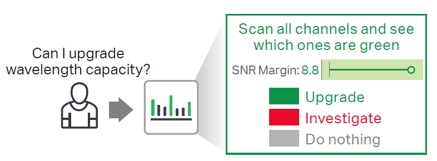Adapting your network to a changing global landscape
A few weeks ago I attended a Ciena talent show, a live event that highlighted the amazing diversity and talents of our Ciena team around the world. There were well over 1,000 of us in attendance enthusiastically giving our shouts of approval. To close the show, our Ciena corporate band OTN Speedwagon brought the house down with their cover of REO Speedwagon’s Roll with the Changes.
 Did I mention the entire global event was held virtually over Zoom?
Did I mention the entire global event was held virtually over Zoom?
Our Ciena jam session was just a blip on the massive global bandwidth market, but it’s a perfect example of how we are all adjusting to the adversities placed before us, and the challenges that enterprises and service providers are facing in keeping us all connected.
The massive changes to our daily lives – and their far-reaching effects on global networks – have truly been staggering. Internet traffic in the U.S. and Europe jumped more than 30% on fixed networks. Home broadband providers have seen a surge in upstream traffic. Verizon saw VPN usage peak at 81% higher than a typical pre-COVID day. Telia Company saw its expected full-year growth projections come to reality in just a few weeks. And there’s been an overall shift to the public cloud, as enterprises seek to improve access to the critical applications we’re increasingly dependent upon.
A new world inertia
The resilience of our global network infrastructure has been impressive, as network operators have been able to tap into previously unused capacity. But the challenge is far from over. Operators are fully expecting this surge in digital demand to become a permanent fixture of our lives and that traffic patterns will become increasingly dynamic and unpredictable.
With our world so thoroughly flung into upheaval – and any ability to truly know what lays before us a mere fantasy – how can we build networks that can adapt to anything and everything the world will throw at them?
I couldn’t agree more. Now that we’ve all been completely immersed in a digital-first world, and experienced how well it can work in so many situations, who says we’ll ever go completely back to what we used to call ‘normal’? Sure, a face-to-face conversation is always going to own a unique place in our world; but aren’t you going to think twice about that overnight trip to Singapore when you could instead go virtual and enjoy the evening at home with your family?
The stats bear this out. Gartner’s latest CFO survey found 74% plan to shift at least some employees to remote work permanently. Research out of the UK found that people aren’t just working from home more, a full 68% expect to work remotely more often even after lockdown restrictions ease. Twitter is among several companies to already offer permanent work-from-home options for their entire workforce.
Adapting to a future we can’t pretend to predict
With our world so thoroughly flung into upheaval – and any ability to truly know what lays before us a mere fantasy – how can we build networks that can adapt to anything and everything the world will throw at them?
This is where the Adaptive NetworkTM becomes more relevant than ever. The truth is that the overbuilt network capacity that has helped address the initial surge in bandwidth demand was in essence a happy accident – a result of the need to overbuild networks due to their static and siloed nature.
This is not the path forward.
What service providers need, and desperately want, is a full view to their network resources, across all layers, with the ability to sense demands and then dynamically respond in the most efficient and effective way possible. This is the foundation of the Adaptive Network.
 Imagine being able to see unexpected traffic spikes, analyze congested links in real-time using a channel margin gauge, then mine available system margin to turn up capacity on-demand – either permanently or until additional bandwidth can be deployed.
Imagine being able to see unexpected traffic spikes, analyze congested links in real-time using a channel margin gauge, then mine available system margin to turn up capacity on-demand – either permanently or until additional bandwidth can be deployed.
Imagine having an up-to-the-minute virtual map of your IP/MPLS network assets, the ability to perform ‘what if’ modeling for network changes, and even rewind to previous network events and states to enable more effective fault and forensic analysis.
These are just some of the many use cases for the Adaptive Network – use cases that address real business challenges and demonstrate how to ensure your network is always ready to adapt.
Now more than ever, we can’t predict what the future holds for networks and connectivity (though I do hope it includes more performances from OTN Speedwagon). But that doesn’t mean we can’t prepare by building a network that can adapt to the challenges of today, and the opportunities of tomorrow.



